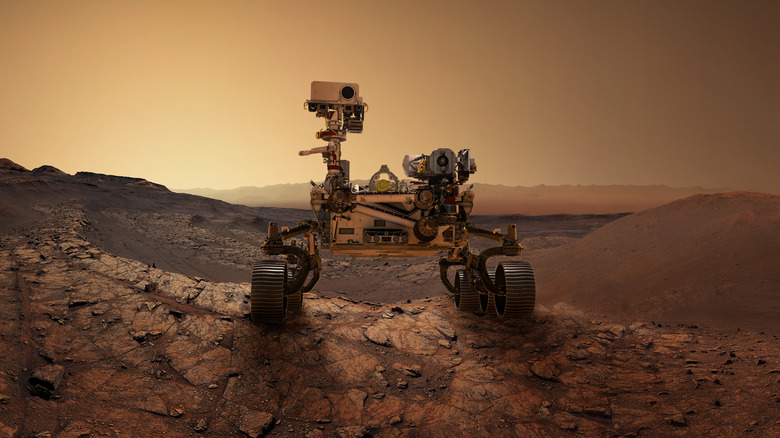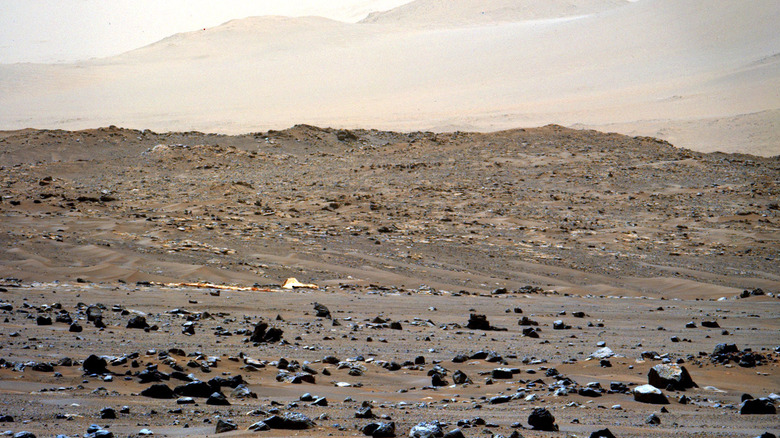Perseverance Rover Arrives At Jezero Delta - Here's Why That's Exciting
The Perseverance rover has been zipping across the surface of Mars at top speed recently, breaking records for the longest drive in a single martian day. Now the rover has come to the end of its road trip, reaching its next science destination: the Jezero crater's delta. This area was once the site of an ancient river delta, meaning that there was once plentiful water here on the Martian surface — and that's very exciting for Mars scientists.
One of Perseverance's major aims is to see if there's any evidence indicating there could once have been life on Mars. Scientists are fairly sure there is nothing living on Mars today, but there could have been life there millions of years ago when the planet looked very different. In fact, the red planet used to have water on its surface and could even have looked a lot like Earth, according to NASA.
If Perseverance hopes to find signs of this life, such as evidence of bacteria, then the delta is a great place to look. It would have been a welcoming environment for life at one point, and the sediment which built up would be great at persevering signs of life (via JPL).
"The delta at Jezero Crater promises to be a veritable geologic feast and one of the best locations on Mars to look for signs of past microscopic life," said Thomas Zurbuchen, a leading scientist at NASA who is the associate administrator of the agency's Science Mission Directorate. "The answers are out there – and Team Perseverance is ready to find them."
What's so special about the delta?
The delta is one of the features of the Jezero crater which made it such an appealing place to send a rover. That's because researchers wanted to look in places where water had been present for a long time, and not places where water only flowed briefly. Jezero is exciting because it has an outlet valley, showing water pooled there and then overflowed (via Digital Trends). That means scientists can be confident that the delta they see there now was indeed full of water for a significant amount of time.
This makes the delta one of the most important areas for the rover to explore. "We've been eyeing the delta from a distance for more than a year while we explored the crater floor," said Ken Farley, one of the Perseverance project scientists from Caltech. "At the end of our fast traverse, we are finally able to get close to it, obtaining images of ever-greater detail revealing where we can best explore these important rocks."
The rover could head up to the plateau at the top of the delta twice, collecting samples as it goes, because there is so much scientific value to see in the area.
"The delta is why Perseverance was sent to Jezero Crater: It has so many interesting features," said Farley. "We will look for signs of ancient life in the rocks at the base of the delta, rocks that we think were once mud on the bottom of 'Lake Jezero.' Higher up the delta, we can look at sand and rock fragments that came from upstream, perhaps from miles away. These are locations the rover will never visit. We can take advantage of an ancient Martian river that brought the planet's geological secrets to us."

